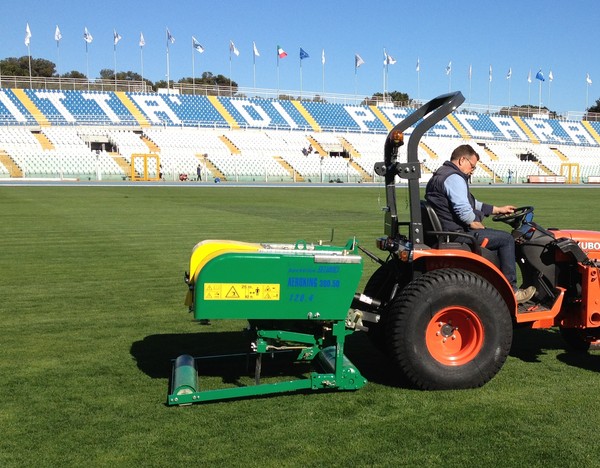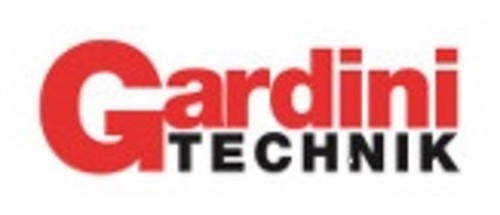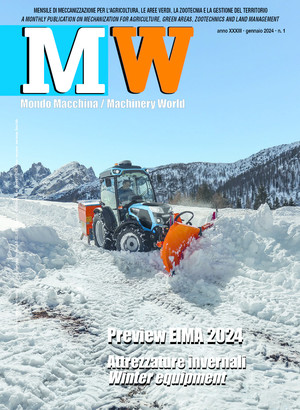
Aerators keeping the lawns breathing
Aeration is vital for keeping air and water circulating in the root systems of lawns and other grassy surfaces, encouraging the activity of microbes in the soil. Vertical or rotary aerators are flanked by top dressers
Grassy surfaces tend to grow more compact over time, which hinders the free circulation of air and water and discourages microbial activity. Compaction depends on the type of soil as well as what the area is used for, as a football field, for golf, as a picnic area, and so on. Maintenance equipment may also be a factor, according to how frequently it is used. Deep aeration stimulates root growth, intensifies microbial activity and reduces the risk of disease, all of which makes it indispensable for lawn health. Aerators work mechanically or hydraulically, mechanical solutions being the most widely used. Piercing the surface with high-pressure water jets is kept for golf greens, football pitches and the like.
Aeration can be manual using forks with rigid tines or even long-spiked shoes. Self-propelled, towed or tractor-mounted machinery can be rotary or vertical, only punch holes or remove soil cores as well, or also de-thatch the surface using a scarifier.
Rotary Aerators
This type of machine consists essentially of a wheel fitted with tines, solid if only a hole is needed and hollow if a core is to be removed. The cores are ejected by a spring, or else when the next hole is pierced. Some machines have an inclined blade behind to push the cores into rows ready for collection.
The aerator’s effectiveness depends on how many holes it makes and how deep. Self-propelled walking models cover a working front of 40-60 cm and are generally powered by a 3-4 kW engine. The tines have a diameter of about 1 cm, down to 5-8 cm, at 100-800 holes per square meter. Hole density is usually less than 200 per sq. m. Tractor mounted machines usually cover 100-300 cm with depths of 12-15 cm at 150 holes per sq. m. Rotary aerators are usually used when compaction is not too great, essentially to avoid deterioration of the grass.
Many of these machines can also be fitted with blades so that they can be used as scarifiers, cutting vertically into the soil down to 12-15 cm. This breaks up the accumulated thatch of leaves, dead stalks, roots and so on, which builds up when not all the material decomposes. When the thatch is thin, it attenuates compaction and protects the roots from big temperature swings. But when it is thicker and compacted, it reduced oxygen and water penetration of the soil.
The main tool for scarification is a set of blades, usually an upside down Y, mounted on a drum. These cut down to 2-3 cm at intervals of 5-6 cm, removing the thatch. Blades working down to 6-10 cm scarify the surface and aerate the soil.
Vertical Aerators
In vertical aerators, a shaft or pistons power the hollow or solid tines.
The quality of the job is good because the tines perforate the soil perpendicularly and risk no deformation of the lawn surface. The hole density is usually higher than with rotary models – generally about 800 holes per sq.m, down to a depth of 18 cm. Self-propelled models work on a front of 50-80 cm using an engine of 4-6 kW. Tractor-mounted models can cover 120-200 cm.
So-called de-compactors penetrate down to 12 cm, but add vibration to the tines, increasing porousness without any deformation of the surface. The vibration is lateral and in the direction the machine is moving, creating an effective combination of vertical penetration with lateral movement.
These machines are usually tractor-mounted and can cover 250 cm or more down to 30-40 cm. They are also said to create vertical drainage. The tractor needs 25-50 kW of power, or over 60 kW if the working depth is down as far as 40 cm. Some models even have drills to perforate the soil, mounted on a tractor, which stops for each perforation before moving on to the next.
Sanding
If soil cores are extracted, they should be collected later. Top dressing should also be applied to fill in the holes with sand of a given diameter.
The self-propelled, tractor mounted or towed machines are essentially sand spreading carts with a hopper and a rotating device to ensure distribution, making centrifugal force a key factor.
For example, sand drops out of the hopper onto two or more rotating disks that ensure distribution. There may also be rotating brushes to guarantee uniform distribution and penetration into the surface.
When to Aerate
How often and how intensely the soil should be aerated depends, as we noted in our introductory remarks, on the type of lawn, what it s used for, and what state it is in. Symptoms of a need for aeration range from a limited percolation of water with stagnant water on the surface, poor grass growth and a reduction in grass density so that the lawn thins out and loses quality.
For some surfaces, for example, sports pitches, maintenance including aeration follows a calendar, but for others the treatment depends on the case-by-case symptoms.
On golf greens, soil coring is normally applied three times a year, in March or April, in July and in September. On the tees and fairways, aeration is required only in spring. On fairways, only some areas are treated, and then in rotation.
For football pitches, aeration frequency depends on the ground’s drainage, which is reduced more or less quickly especially due to compaction by the players’ feet. In an ordinary situation, one to four aerations are made a year, according to the weather.
The holes are pierced at a density of 150-200 per sq. m, down to a depth of 8-10 cm. Post-aeration dressing involves distributing 1-4 litres of dressing per sq. m, distributed such that the dressing is absorbed in 2-4 days, to avoid creating problems for the players.
For ornamental lawns on which the trampling of feet is limited the soil maintains its porousness longer.
Aeration is only needed a few years after planting, normally in spring, and repeated when the first symptoms of the need for new aeration appear.








